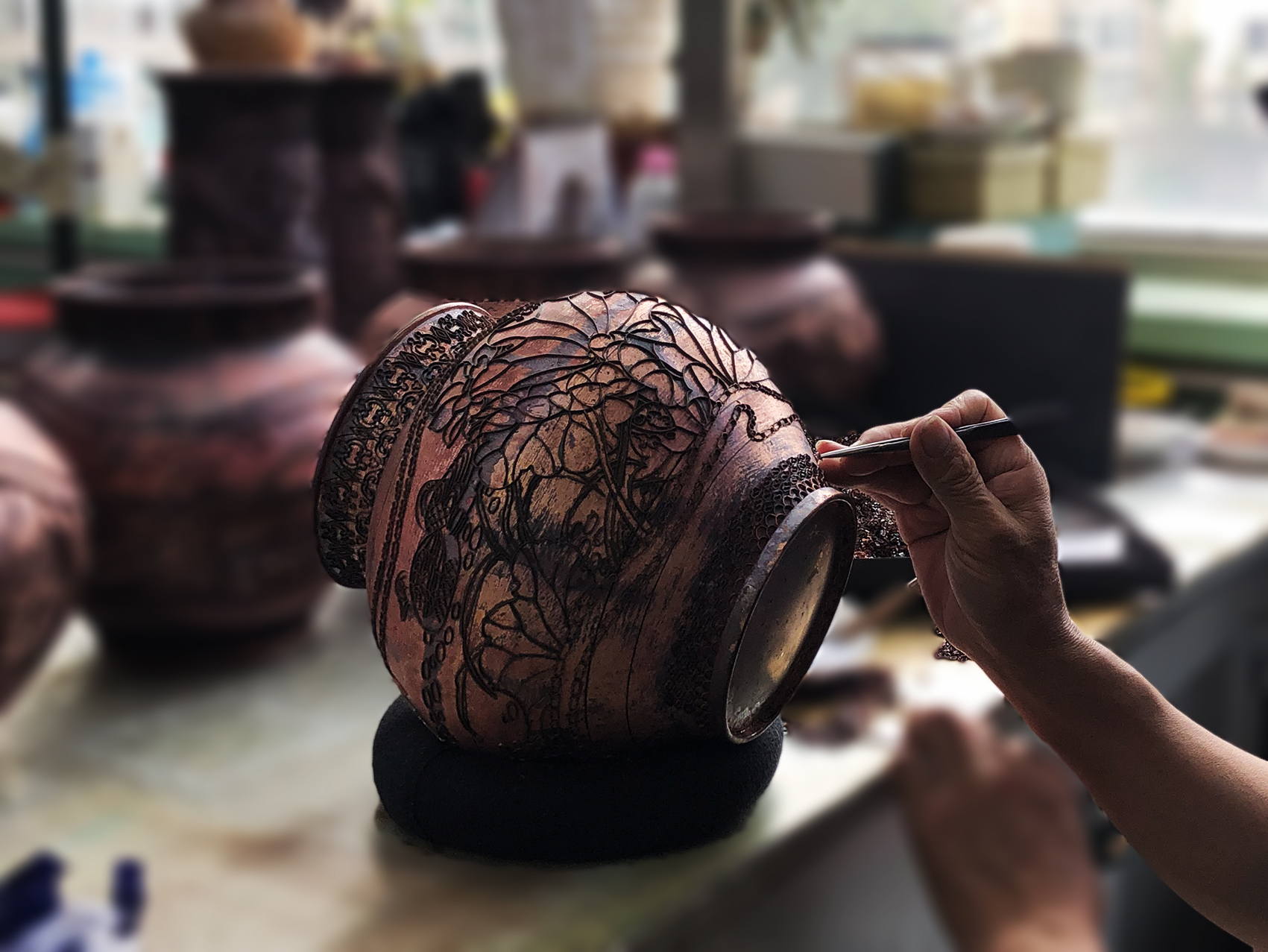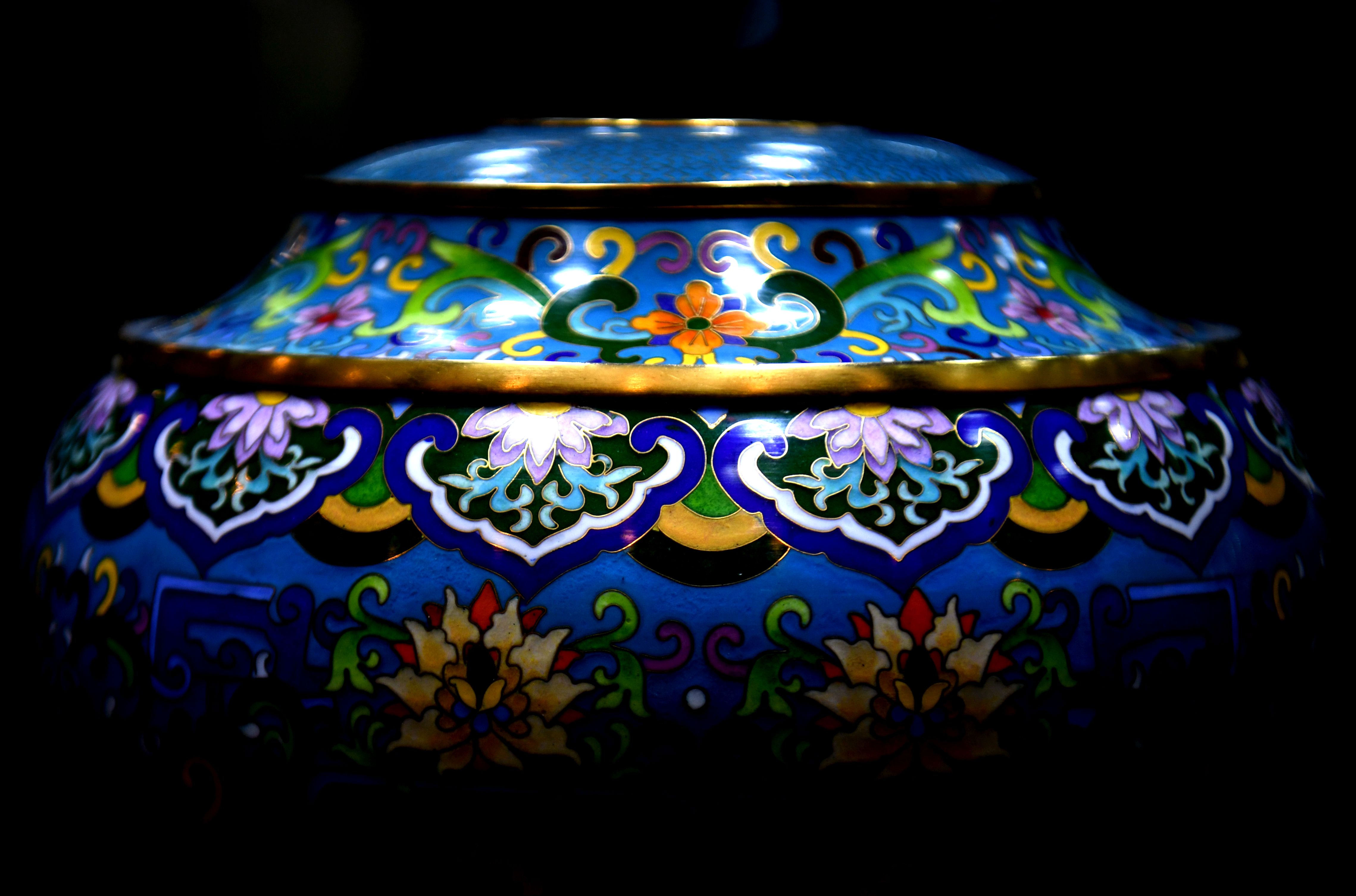Chinese Cloisonné: Jing Tai Lan
By WEN Haoting
A Jing Tai Lan enamelware (PHOTO: XINHUA)
Chinese cloisonné, also known as copper cloisonné enamel, is a well-known traditional handicraft in Beijing. It is famous for its elegant modeling, rich patterns, brilliant and dazzling colors, and graceful design.
During Jingtai period in the Ming Dynasty, Chinese cloisonné reached a high level of craftsmanship. And because the enamelware made in this period was typically colored in blue, it was called Jing Tai Lan (Jingtai blue ware) from that time.
Jing Tai Lan, with its elegant shape and bright colors, still enjoys a good reputation in the world's craft history. In China, it is regarded as the quintessence of Chinese culture.
On May 20, 2006, the Jing Tai Lan technique was included in both the first batch of national intangible cultural heritage lists, and the intangible cultural heritage big data platform approved by the State Council.
Mold-making
Producing Jing Tai Lan is a highly complicated process. It starts with mold-making. Craftsmen select pieces of copper of exactly the same thickness and then cut and hammer the pieces into molds for different utensils, such as vases, jars, bowls and plates.
Filigree Welding
The second step of filigree soldering is really challenging and can be compared to embroidery. With a blueprint in mind, the artisans make full use of their experience and imagination to cut and curve the copper filaments into various shapes, such as flowers, birds, mountains and rivers. Dipped in glue, the strips are then pasted onto the mold.

Craftman is gluing copper filaments onto the mold. (PHOTO: S&T Daily)
Enamel Filling and Firing
Now comes the enamel—the colorful overcoat for Jing Tai Lan. Mineral ores for the pigments are ground and mixed with water, and different mineral ores show different colors. Craftsmen fill in the lattices with these various pigments.
However, filling them only once is just the beginning. Fired in the kiln, where the temperature can reach 1,000℃, the copper filaments are welded to the mold, but the pigments contract. Artisans have to refill and refire the piece three or four times.
This is a Jing Tai Lan vase that is going through its first firing. (PHOTO: XINHUA)
Polishing and Gilding
Finally, the color surface is polished with a whetstone, and last but not least the product needs to be gilded so that the metal parts will not get rusty.
Nowadays, craftsmen are working hard to pass this skill down to younger generations. With the help of more colorful pigments and sophisticated machines, artisans are creating gorgeous new Jing Tai Lan enamelware. In addition to traditional patterns with auspicious connotations, new designs depict a peaceful life and the harmony of nature.
Source: ChinaToday



